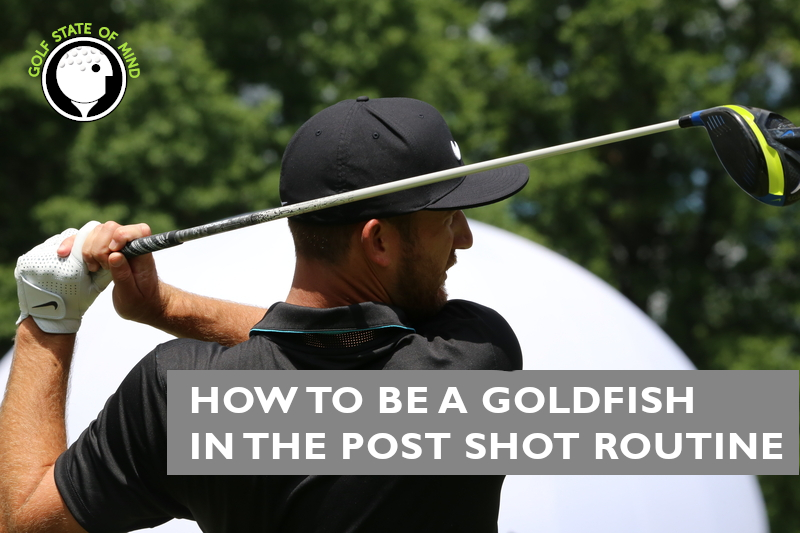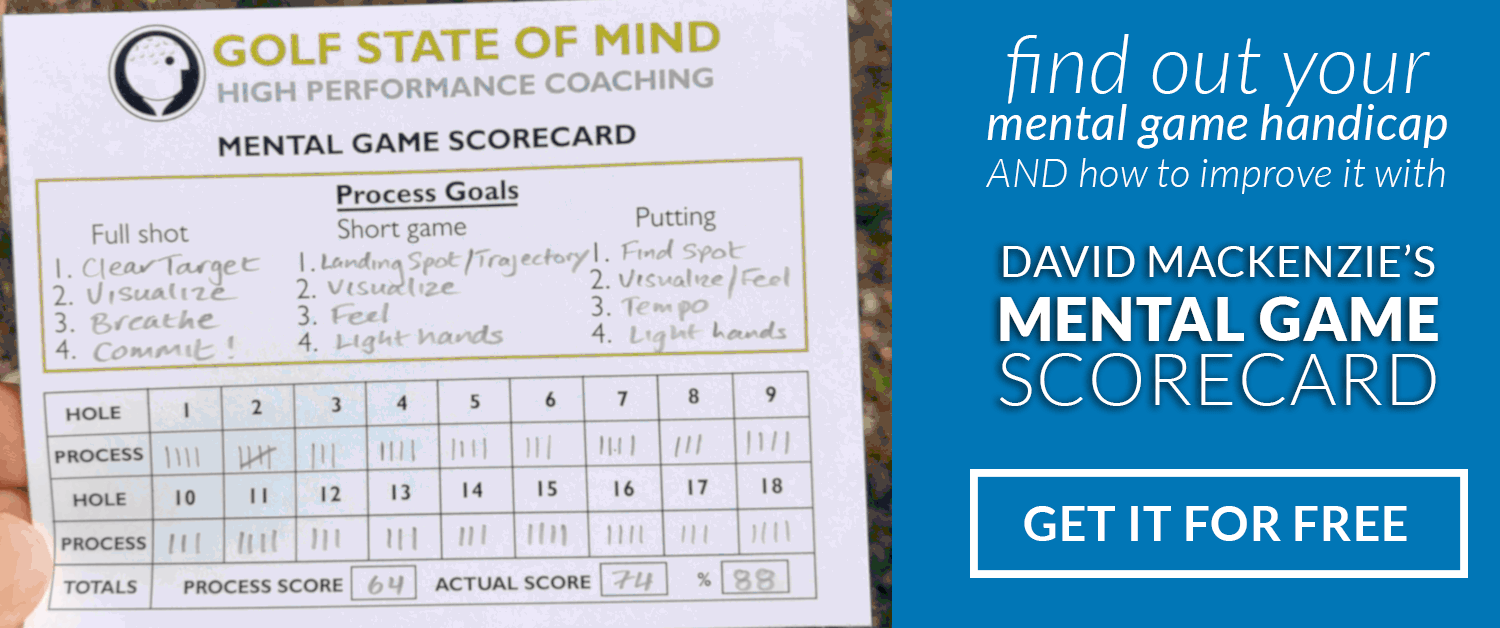
How to Be A Goldfish in The Post Shot Routine For Golf
Whether it’s after a bad shot or a bad round, sometimes (in the words of Ted Lasso), it’s best to “be a Goldfish” and have a 10 second memory. But this is easier said than done and requires the use of some mental game techniques, which I’m going to share with you in this week’s lesson.
Good shots are easy to move on from (in fact you want to stay with them), but less desirable outcomes can leave us feeling frustrated, angry, and fearful of things getting worse. Letting those thoughts and emotions take hold of you can affect how well you play the next shot and the rest of the round.
Unfortunately, there’s no magic pill that you can take to “turn off” feelings (hitting a ball in the water will aways make you feel some sort of discomfort), but here are 5 things you can do to “be a Goldfish” and have those feelings dissipate quickly instead of them triggering negative thinking and doubt ahead of the next shot. This is what the Post Shot Routine for Golf is all about.
1. Expect to Hit Some Bad Shots
In your next round, you’re going to hit some bad shots. I always ask my players how many they expect to hit in a round. E.g. If it’s 8, allow yourself to hit that many. When you hit your first one or two, they’ll be easier to bounceback from in your post shot routine for golf.
2. Take a Positive from EVERY Shot during the Post Shot Routine for Golf
The human brain has a “negativity bias” that makes it hard not to ruminate on bad shots, bad rounds or think about what could go wrong. In fact, whenever I ask a player about a round, they’ll often start with the negatives.
However, with practice, you can begin to reverse the brain’s negativity bias and actually start being more positive and optimistic, which will help you recover quicker from setbacks. One way to do this is to prompt yourself to think about what was positive, and after a while you’ll do it automatically.
After a bad shot, see if you can find something about it that doesn’t make it all that bad. E.g.
“I committed to that shot.”
“It was a good miss.”
“It was a good strike.”
“That was close to being a good shot.”
“It was on a good line.”
Challenge yourself to see how many shots in your round you can take a positive from.
3. Smile and Be Confident
Body language and facial expressions are a simple way to change how you feel. See if you can brush off a bad shot by smiling about it. The simple act of smiling or laughing produces endorphines “feel good chemicals” which quickly change how you feel. Bad shots are typically followed by negative body language or gestures which makes the feelings worse. With confident body language on the golf course and smiling, you are telling yourself that you are ok and ready to move on.
4. Erase and Replace
Each shot is a learning opportunity and by using it, it can also serve as a way to end a shot and move on. After a shot that you didn’t hit well, without thinking about it for too long, make the swing that you wanted to make.
5. Make a Post Shot Routine for Golf your Intention
Whenever my students go out to play, I have them to work on at least 1 mental game skill. Afterall, you need to start creating habits in practice, so they become the default in tournament rounds. If it’s the post shot routine, I will have them score themselves on this after each hole, using my mental game scorecard. Set your intentions for your Post Shot Routine before you go out to play, and hold yourself accountable to doing it.
Play well out there!
Photo 73710690 / Dustin Johnson © Droopydogajna | Dreamstime.com


